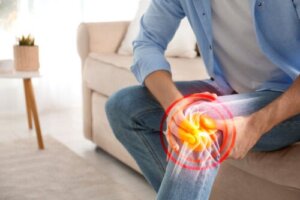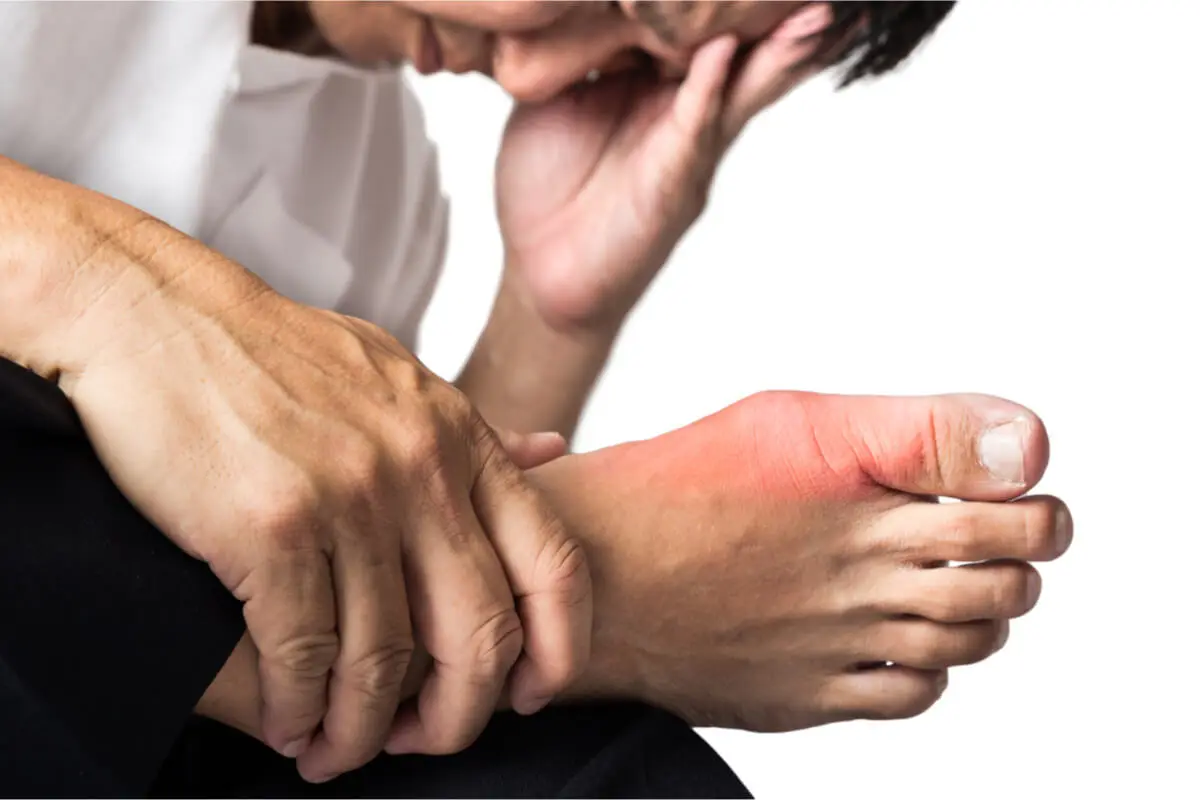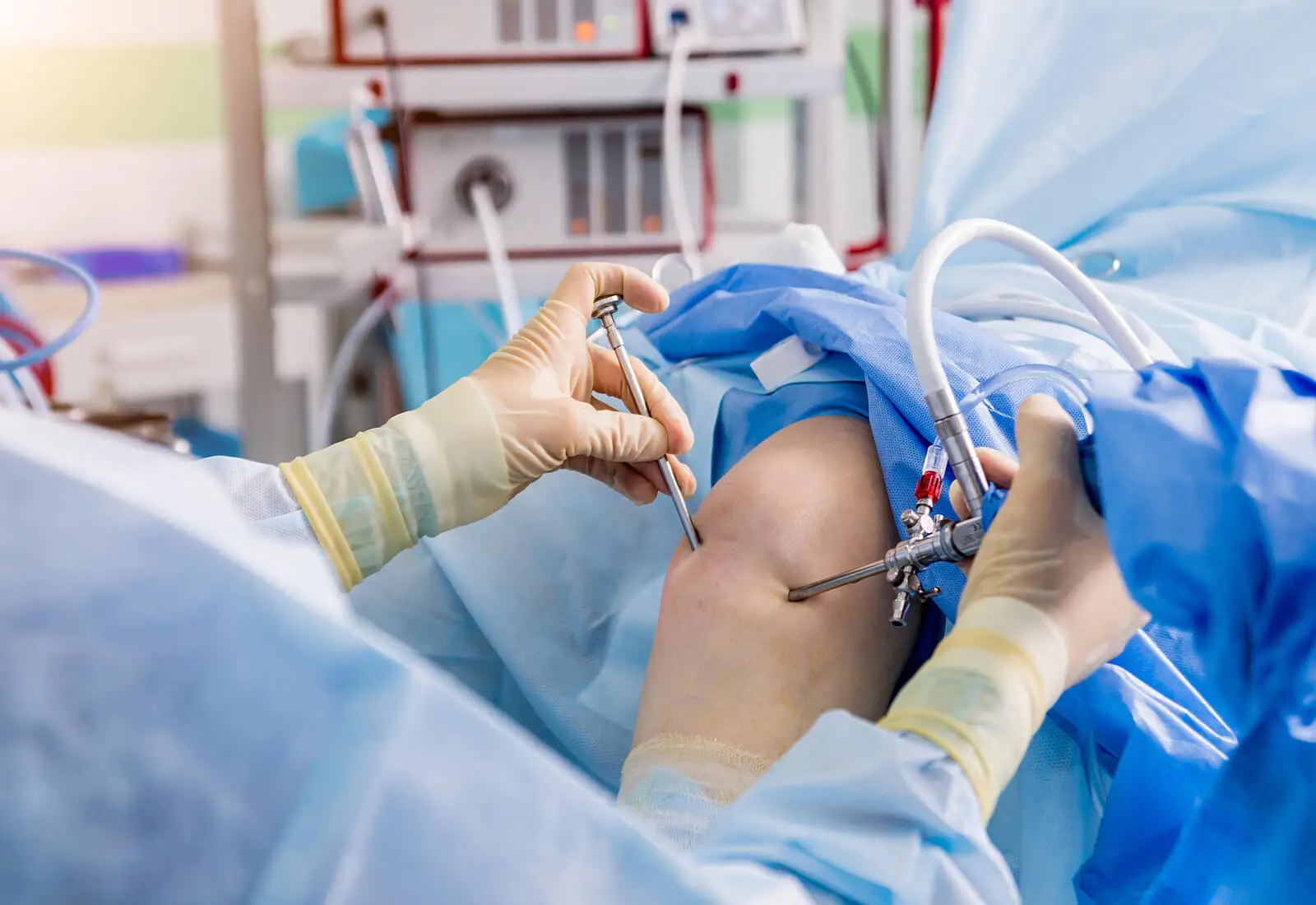Joint Effusion: What Is It and How Can It Be Treated?


Written and verified by the doctor María Irene Benavides Guillém
The term “joint effusion” is used to refer to the abnormal accumulation of liquid in the joints. This may be synovial fluid, blood, or pus. It may affect one or more joints.
Synovial or joint fluid is a viscous, clear, gel-like substance rich in hyaluronic acid, lubricin, prostaglandins, proteinase, and collagenases. Under normal conditions, it’s found in small quantities as a thin film that acts as a lubricant.
It’s also a source of nutrients for the structures that make up the joint.
However, in response to trauma, inflammation, or infection, changes can occur in the volume of this fluid. So, that’s when joint effusion occurs.
Joint effusion is a sign or indicator that something is wrong and not a disease in itself.
We think you may also enjoy reading this article: 8 Foods to Avoid if You Have Problems with Your Joints
What are the causes of joint effusion?
There are many different possible causes that can trigger joint effusion. These are usually divided into traumatic and non-traumatic, as well as due to local or systemic inflammation.
They can also be classified according to their duration:
- Acute: less than six weeks of evolution
- Chronic: longer than this period
Joint effusion due to local inflammation
When the effusion affects a specific area, it’s considered local. In this case, it may be due to trauma and degenerative diseases, such as osteoarthritis. It’s also sometimes due to diseases such as hemophilia and hemochromatosis.
Joint effusion due to systemic inflammation
If the effusion affects several joints, the condition is systemic. The causes of this type of effusion are as follows:
- Gout
- Rheumatoid arthritis
- Systemic lupus erythematosus
- Psoriatic arthritis
- Sarcoidosis
- Septic arthritis

What are the symptoms of joint effusion?
Joint effusion is accompanied by edema or swelling, pain, redness, warmth, and functional limitation of the joint. Deformities and crepitus or crackling may be noted.
When the origin of the symptoms is inflammatory, it improves with ambulation and worsens with rest. On the contrary, the pain of mechanical cause is one that worsens with movement and improves with rest.
The pain is usually of diurnal predominance and does not interrupt sleep. However, it should be noted that even without symptoms, joint effusion may be present.
Calderon et al. performed a joint ultrasound on 182 asymptomatic volunteers. Their study revealed some alteration in 87% of the cases. In 68.1%, the finding was a joint effusion.
Joint effusion was the most frequent abnormality in both hands and feet.
How is joint effusion diagnosed?
A thorough history and clinical examination are necessary to determine the cause of the joint effusion. If the effusion is accompanied by pain, its exact location will be of vital importance, as well as the nature (diffuse/localized, dull/electrifying, radiating), the time of onset (early morning, running, under stress), possible triggers (coughing, sneezing, certain movements), intensity and duration (intermittent, permanent).
For example, in the case of gout, the pain is intense and gets worse at night and in the morning. In the case of rheumatoid arthritis, on the other hand, morning stiffness is typical.
Laboratory tests
To differentiate between systemic and local inflammatory joint effusions that aren’t associated with trauma, several laboratory tests are useful. First, C-reactive protein (CRP) and erythrocyte sedimentation rate (ESR). Both are elevated when the condition is systemic.
Depending on the suspected diagnosis, more specialized studies, such as the measurement of blood uric acid, antinuclear antibodies (ANA), and rheumatoid factor, will be performed. Finally, if this does not bring the diagnosis closer, fluid will be removed from inside the joints for close examination.
Imaging studies
An arthrosonography or joint ultrasound is usually the first imaging study indicated. It will be very helpful in distinguishing whether the problem is inside or outside the joint.
Meanwhile, conventional radiography will be helpful in ruling out fractures when the joint effusion is related to trauma. At the same time, tumors, bone lesions, and degenerative or inflammatory changes can be visualized this way.
Computed tomography and magnetic resonance imaging will be reserved for difficult diagnostic cases. Also, for complex trauma or non-inflammatory effusions.
How is joint effusion treated?
Treatment of joint effusion will depend on its cause, accompanying symptoms and the joints affected. While there are some home measures that are recommended, such as rest, local ice, analgesics, and anti-inflammatory drugs, it’s best to consult a doctor you trust.
Therapeutic arthrocentesis
Arthrocentesis deserves special mention, a procedure indicated for acute symptoms of joint pain, exacerbation of a chronic joint disease, or in cases of painful joint effusion due to trauma. The joint space will be penetrated, and the fluid will be aspirated with a needle.
This procedure must be performed under sterile conditions and by an experienced physician. Complications are rare and, if they do occur, are usually not serious.

Like this article? You may also like to read: Anti-inflammatory Cayenne Pepper Ointments for Joint Pain
Can joint effusion be prevented?
There are certain factors that are conducive to the development of joint effusion. Consequently, avoiding them is a way to prevent them.
In the study by Calderón et al, older people (51 to 60 years of age), dedicated to manual labor such as agriculture, gardening, housewives, cargo handlers, plumbers, mechanics, maintenance, and general service people; with working time of more than ten years and suffering from diseases such as arterial hypertension, diabetes mellitus, and hypothyroidism, presented more frequently joint effusion.
Another known risk factor for joint problems is overweight. Losing 5 kilograms (about 10 pounds) of weight or losing 5% of body weight reduces knee discomfort by up to 90%.
On the other hand, the role of sleep in bone health is less well known, but of great interest. Sleeping too few hours or working at night have a negative impact.
The mechanisms proposed to explain this fact range from the acquisition of unhealthy habits, such as disordered eating, to the alteration in the production of hormones and genes that work according to the body’s circadian rhythm.
Ten tips to take care of your joints
Here are some tips that will help you take care of your bone and joint health:
- Maintain an ideal weight and avoid being overweight.
- Perform physical activity at least 30 minutes per day.
- Prevent injuries that may occur with sports.
- Take measures to avoid injuries at work.
- Prevent falls.
- Don’t smoke.
- Don’t drink alcohol.
- Get plenty of sleep.
- Go to the doctor in time if you notice any symptoms in your joints.
- Make sure to attend your regular medical check-ups and to follow the recommendations of the professional if you’ve had any injuries.
Don’t forget that to know what type of physical activity is right for you and what dietary regimen is the healthiest, it’s advisable to consult a health professional.
All cited sources were thoroughly reviewed by our team to ensure their quality, reliability, currency, and validity. The bibliography of this article was considered reliable and of academic or scientific accuracy.
- Henniger M, Rehart S. Vorgehen bei Gelenkerguss [Approach to joint effusion]. 2016;45(9):795-806
- Calderón-Cordero C, Narváez-Reyes M, Calvo-Páramo E, Torres-Cuenca T, Díaz-Cortés M, Quintana-López G. Hallazgos ultrasonográficos a nivel de articulaciones de manos y pies en sujetos voluntarios asintomáticos. Colomb.Reumatol. 2019;26(3):165-176.
- Pérez A. Diagnóstico. Historia y examen físico. Atención Primaria,2014;46(Supl 1):18-20.
- Seidman AJ, Limaiem F. Synovial Fluid Analysis. En: StatPearls [Internet]. Treasure Island (FL): StatPearls Publishing; 2022. Disponible en: https://www.ncbi.nlm.nih.gov/books/NBK537114/.
- Whittaker JL, Runhaar J, Bierma-Zeinstra S, Roos EM. A lifespan approach to osteoarthritis prevention. Osteoarthritis Cartilage. 2021;29(12):1638-1653.
- Ebeling PR, Cicuttini F, Scott D, Jones G. Promoting mobility and healthy aging in men: a narrative review. Osteoporos Int. 2019 ;30(10):1911-1922.
- Swanson C. Sleep Disruption and Bone Health. Curr Osteoporos Rep. 2022;20(3):202-212.
This text is provided for informational purposes only and does not replace consultation with a professional. If in doubt, consult your specialist.








